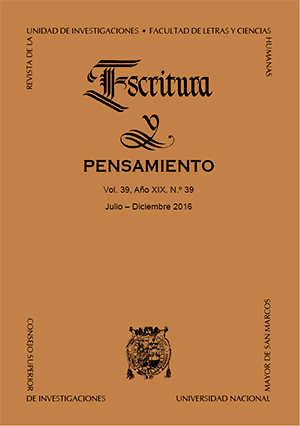THE TRANSITIONAL ANDEAN TAPESTRY. AN ICONOGRAPHIC AND TECHNICAL STUDY
DOI:
https://doi.org/10.15381/escrypensam.v19i39.13729Keywords:
Andean textiles, colonial art, colonial fabrics.Abstract
This study deals with the oldest colonial Andean tapestries which have been preserved and are often called “transitional” because they present technical and iconographic features, from both pre-conquest and west. It focuses on probably the oldest extant copy in Lima, a magnificent piece, unknown among scholars, made with fibers and traditional Andean techniques and a design in which the Andean forms appear next to a Christian cross. The analysis of both the iconography and the materials and manufacturing, provides data that contribute to answer the initial hypothetical research question: What happened to the cumbi fabric in colonial times? As it is known, cumbi fabric (finely woven cloth) was considered among the Incas of greater value than precious metals because of its many functions. The results reveal a continuity of Andean textile tradition. Several features found in the fabric are part of the standard pattern of fabrics imposed by the Inca State on the making of uncus for the elites. This reveals that cumbi fabric went beyond the agitated times of the conquest and survived in different format and function.Downloads
Published
Issue
Section
License
AUTHORS RETAIN THEIR RIGHTS:
a. The authors retain their trademark and patent rights, and also over any process or procedure described in the article.
b. The authors retain the right to share, copy, distribute, execute and publicly communicate the article published in the Escritura y Pensamiento (for example, place it in an institutional repository or publish as part a book), with acknowledgment of its initial publication by Escritura y Pensamiento.
c. Authors retain the right to make a subsequent publication of their work, to use the article or any part of it (for example: a compilation of their work, lecture notes, thesis, or for a book), provided that they indicate the source of publication (authors of the work, journal, volume, number and date).













